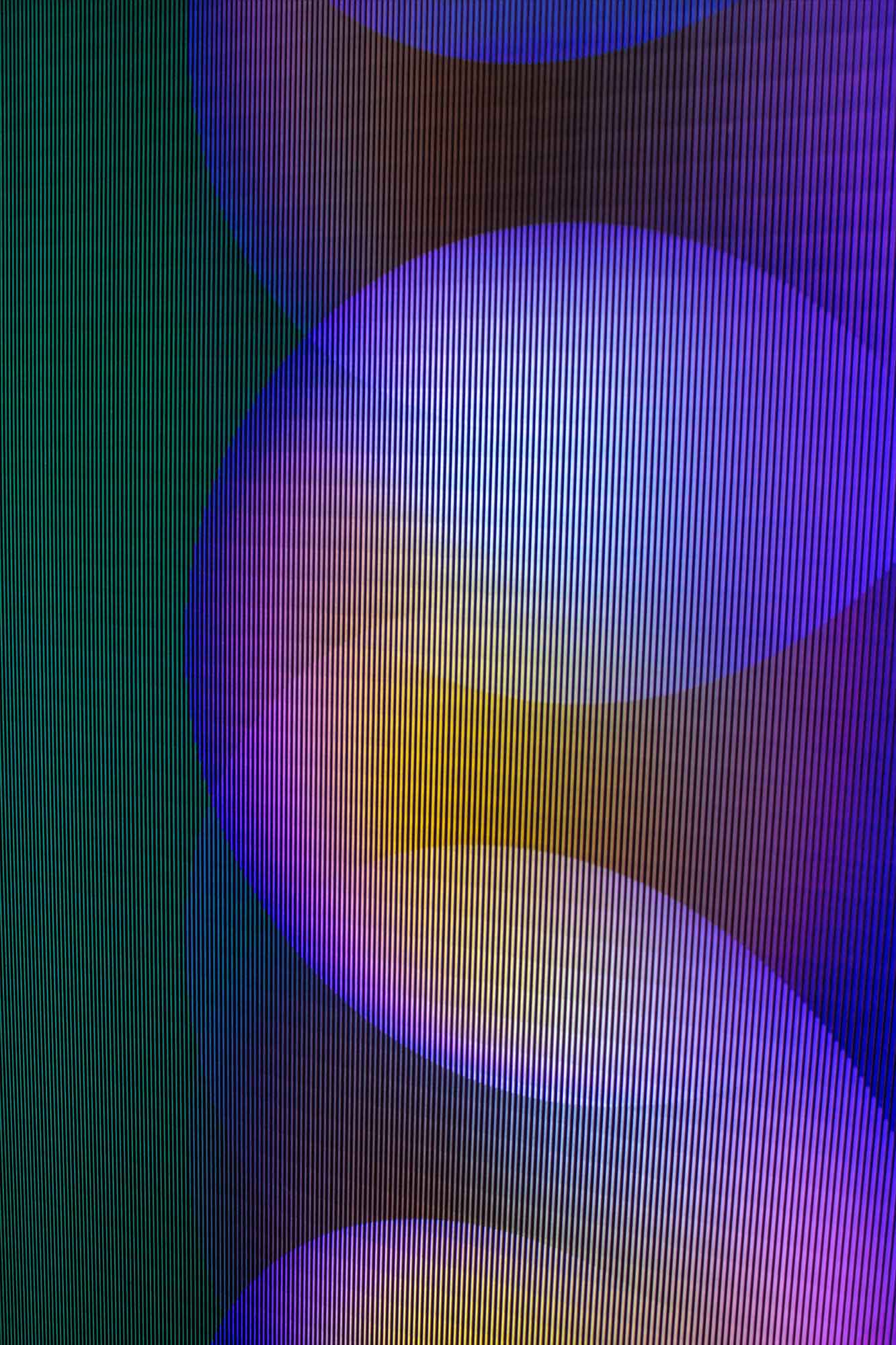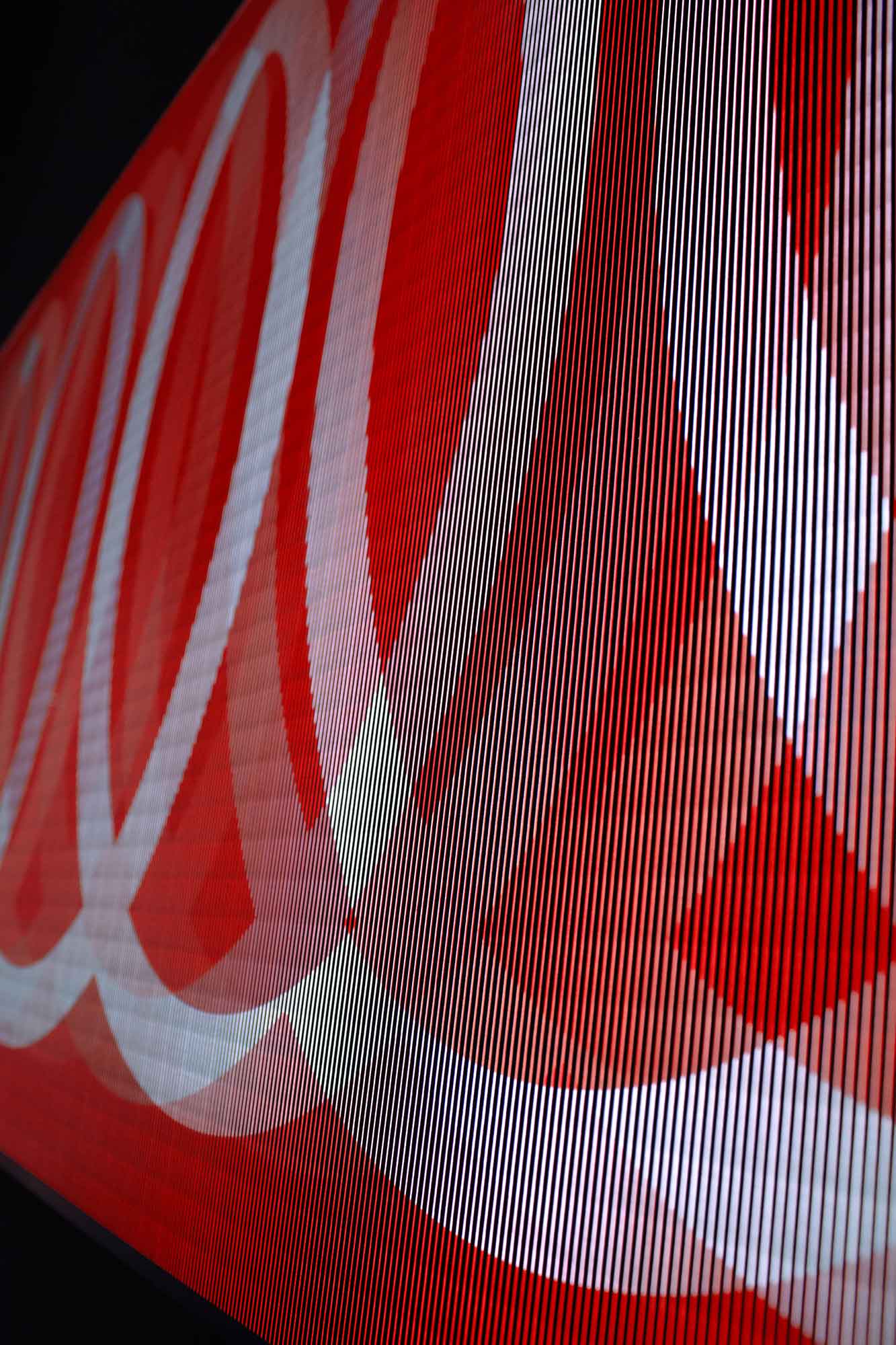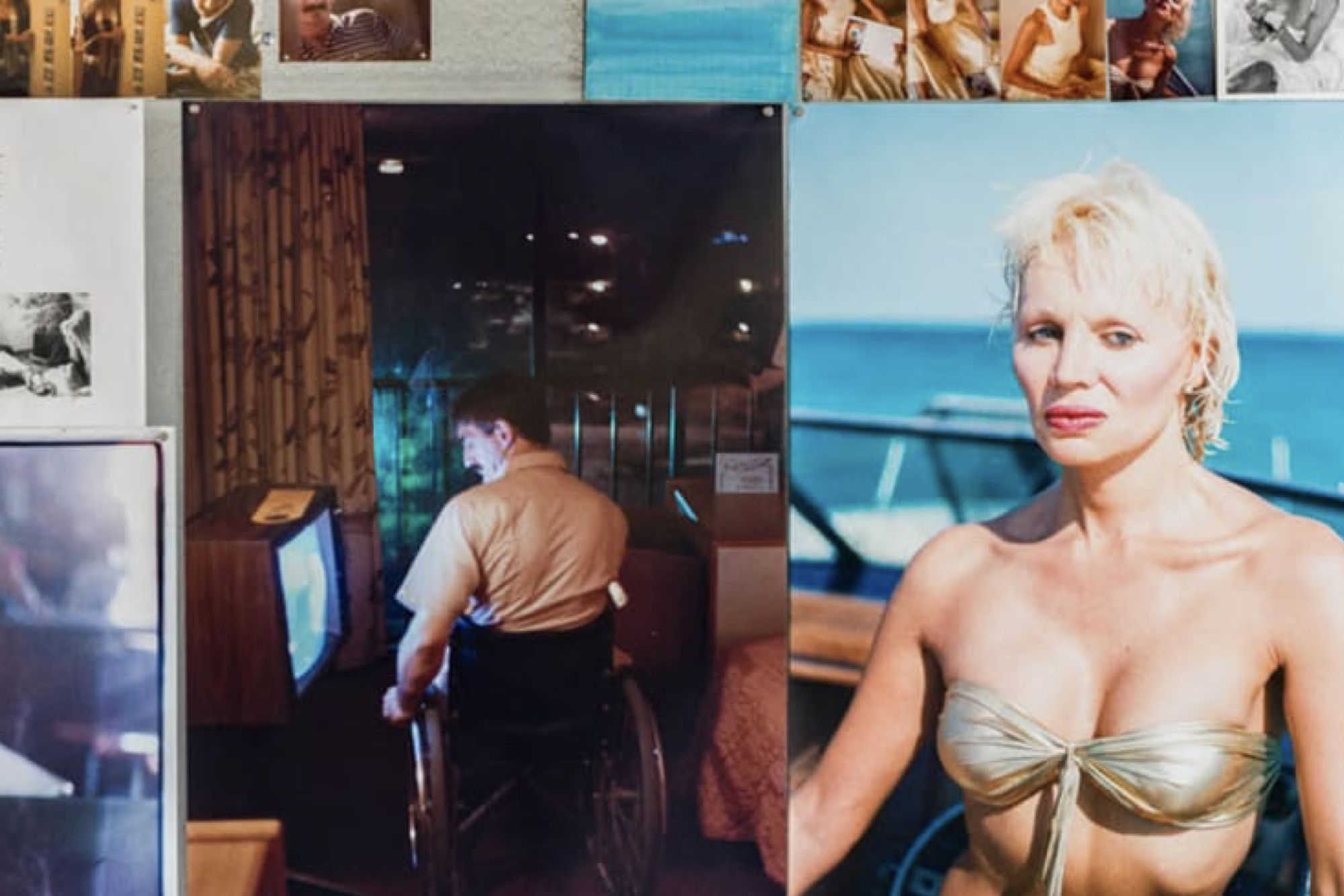MADE IN — Paul Sende
Exposición individual en Pabellón 4, Buenos Aires, Argentina
Del 27 de octubre al 12 de noviembre
El Cinetismo del Nuevo Siglo
El despliegue funciona como una plaza de juegos fuera del tiempo. Lo que vemos son patrones curvos que imitan el movimiento, círculos que bailan sin un orden discernible, tótems prismáticos y formas zigzagueantes que amenazan con mutar. Como escribe la curadora Ana Markman, este universo “se despliega en una plaza de juegos de otro espacio-tiempo que invita a circular, detenerse, alejarse y acercarse”. El universo de Paul Sende es un inventario infinito de espirales, aros y órbitas.

A primera vista, las obras parecen productos industriales por su acabado, pero una mirada más cercana revela la mano artesanal. Esta tensión entre lo industrial y lo hecho a mano es una constante, sin importar el material. La luz funciona como un material más en su paleta. Su inventario es minimalista, basado en formas geométricas básicas y simples operaciones compositivas. Sende evita el espectáculo; su objetivo es generar composiciones armónicas e inestables que produzcan una experiencia estética dinámica.
El mundo de Sende es cinético en el sentido más amplio. Algunas piezas se mueven por sí mismas, como Éter, una escultura motorizada donde discos de acero y acrílico crean una coreografía impredecible de luz y espacio. Otras, aunque estáticas, invitan al espectador a moverse. Los cuadros lenticulares, llamados GIF, obligan a desplazarse por la sala para generar la ilusión de movimiento. El observador se convierte en el play/pause de la obra, controlando la velocidad y la dirección con su propio andar.

En este último tiempo, Sende ha virado hacia lo simbólico y lo poético. Se refiere a su escultura modular LOOP como “la serpiente”, aunque esté construida con geometría abstracta. El título encaja, remitiendo a la repetición y al serpentear de la forma. También alude a los sistemas constructivos como LEGO.
Sende vuelve amable la geometría. La hace transitar desde el arte concreto hasta el cinetismo lumínico, y se instala en un “cinetismo pop”. Su trabajo se vuelve más accesible, alejándose de la frialdad de la abstracción pura.
La llegada de su hijo impulsó esta dimensión lúdica. Esculturas como LOOP13 —modular y de gran formato, con trece piezas sometidas a un sofisticado acabado automotriz— o XIL-FL B —madera pintada y encapsulada en resina— no son solo arte, son juguetes gigantes hechos para ser disfrutados por cualquiera, desde la edad 0+. Es la democratización del arte y la geometría a través del juego.

MADE IN — Paul Sende
Solo Show at Pabellón 4, Buenos Aires, Argentina
From October 27th through November 12th
Kineticism for the New Century
A playground unfolding outside of time. What we see are curved patterns mimicking movement, circles that dance without order, prismatic totems, and zigzagging shapes on the verge of transformation. As curator Ana Markman writes, this universe “unfolds in a playground outside of time, inviting one to circle, stop, move away, and approach.” Paul Sende’s universe is an infinite inventory of spirals, loops, and orbits.

At first glance, his works appear industrial — flawless in finish — yet a closer look reveals the hand of the maker. This tension between the industrial and the handmade defines his language. Light functions as a material in itself. His visual vocabulary is minimalist, built on basic geometric forms and restrained compositional logic. Sende avoids spectacle; instead, he seeks harmonic instability — compositions that breathe, vibrate, and shift in perception.
Sende’s world is kinetic in the broadest sense. Some pieces move on their own, like Éter, a motorized sculpture where discs of steel and acrylic perform an unpredictable choreography of light and space. Others, though static, invite the viewer to move. His lenticular works, aptly titled GIFs, demand that one walks around them to activate the illusion of motion — turning the observer into the work’s own play/pause.

Recently, Sende’s practice has turned toward the symbolic and the poetic. His modular sculpture LOOP is affectionately called “the snake,” though it’s built from pure geometry — a name that speaks to repetition, undulation, and the serpentine flow of form. The reference to LEGO and modular systems underlines this constructive playfulness.
Sende softens geometry. He guides it from Concrete Art toward a kind of luminous “Pop Kineticism,” where light and play coexist. His recent works — like LOOP13, a modular structure with thirteen high-gloss automotive-finished pieces, or XIL-FL B, painted wood sealed in resin — embody this evolution. They are not just art objects, but monumental toys — open invitations to wonder, to touch, to move.
Through play, Sende democratizes geometry. His work is movement, color, vibration — a kinetic language for the new century.






